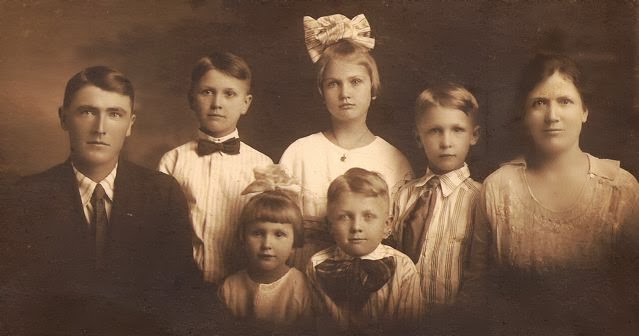 | |
| Thorn Spring and Crab Creek were Dunn locations | . |
Grandma Mary’s pioneer ancestors flourished in southwestern Virginia. I wonder if she had any inkling how deep and firm her roots grew there. This time it’s 5x great-grandfather, Thomas Dunn: Me > Verne Troutman > Mary Waggoner > Eli P. Waggoner > Anna F. Harman > Henry Harman > Mary “Polly” Dunn > Thomas Dunn.
Thomas Dunn was born before 1745, place is uncertain. Some researchers think he was born in Ireland, others think it was northern Virginia. I haven’t found proof of either place. Numerous men named Thomas Dunn in Virginia make it difficult to pinpoint his parents. Some Ancestry trees connect him to Thomas Dunn and Lucy, but this man’s will does not include a son named Thomas.1
Our Thomas married Mary Fickle, daughter of Michael and Margaret Fickle.2 To them were born seven known children: Thomas Dunn II, Mary Polly (my ancestor), Rachel, Elizabeth, Esther, John, and Margaret.3
The Dunn, Harman, and Thompson families were closely associated. Their children and grandchildren intermarried.
In 1755, when Shawnee attacked the Ingles family killing Colonel Patton and others, and capturing Mary Draper Ingles among others, family lore claims Thomas Dunn to have been among the men who set out to track the kidnappers.
In March 1769, William Preston surveyed 320 acres of land for Thomas Dunn on “Macks Run, corner Col. Patton.”4 Thomas Dunn also received a deed for land on a branch of Crab Creek.5 In addition, he bought land on Thorn Spring, which was in court in dispute, years later.6
During the Revolution, Dunn served in the Montgomery County militia in Thomas Ingles’ Company and later as a juror.7 During that time, jurors had much more responsibilities than they do today, including questioning the defendant and doing their own research, even questioning the lawyers and judges.8
When he died, Thomas Dunn owned a sizeable estate of 2,115 acres to be divided among his seven children.9
My supplemental application for Thomas Dunn has been submitted but not yet verified. So we’ll see if I provided sufficient proof of lineage. It’s always a challenge.
Interested in learning how to join Daughters of the American Revolution? Send me a message. It's a great service organization.
________________________
1 Alabama Surname Files, Expanded, 1702-1981, n.p., Thomas Dunn, Jr., Ancestry.
2 Frederick County, Maryland, Probate Administration Accounts Liber A-1 folio 385: Will of Michael Fickle, written 20 Nov 1770, probated 3 Jan 1771.
3 Mary B. Kegley and F. B. Kegley, Early Adventurers on the Western Waters, abstract of Wythe County Deeds, 1809: Partition Deed of 7 parts to heirs of Thomas Dunn.
4 Kegley and Kegley, p. 41-42.
5 Ibid, p. 183. This deed resulted in a lawsuit years later regarding the rightful owner of the land.
6 August County, Virginia, Chancery Records, transcribed by Eric D. Ausmus, posted on Ancestry, 22 Dec 2012.
7 Summers, Annals of Southwest Virginia, Vol. 1, p. 734; Virginia Magazine of History & Biography, Vol. 47, p. 35. Sources listed on DAR.org > GRS > Thomas Dunn #A132948.
8 David Barton, "Courts of Justice," The Founders Bible (Newberry Park, CA: Shiloh Road Publishers, 2012) p.330.
9 Augusta County, Virginia, Chancery Records.






